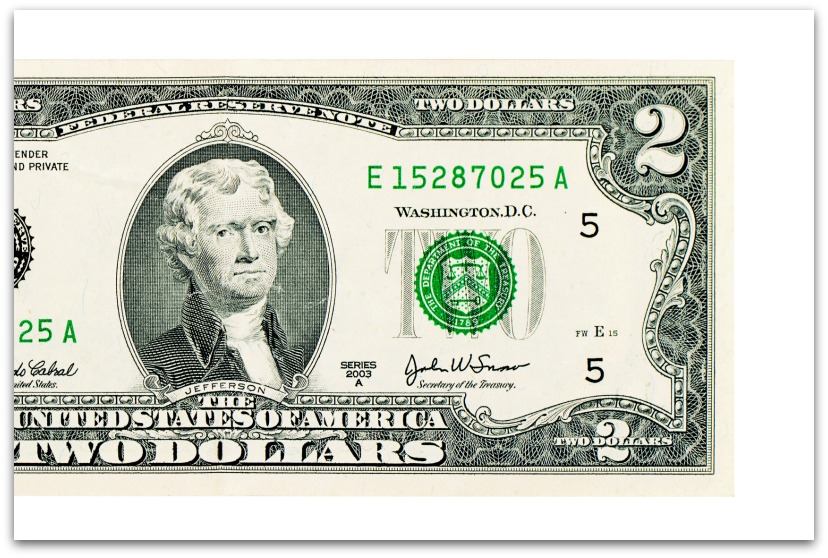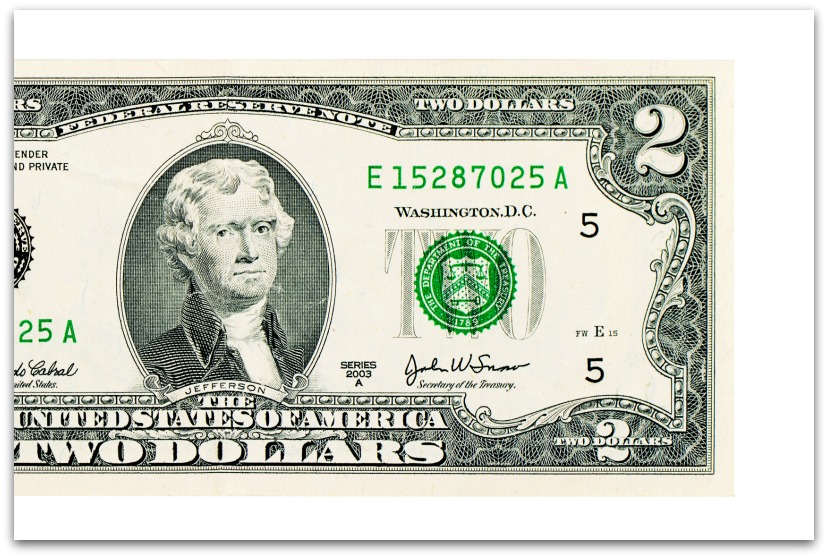Random trivia facts about the least-popular denomination of U.S. currency: the $2 bill. Story originally published in Uncle John’s Perpetually Pleasing Bathroom Reader.
- First authorized in 1862, $2 bills were printed until 1966, at which point they were discontinued…but only for 10 years. They were reintroduced in 1976 as part of the Bicentennial celebration.
- Many collectors had their Bicentennial bills postmarked on the day of issue (April 13, 1976), hoping to turn them into valuable collectibles. There are now so many of the postmarked bills that they may never be worth more than $2.
- The 1976 reintroduction was an attempt at cost-cutting. The government estimated that it could save $26 million if the $2 bill replaced about half of the $1 bills in circulation. (It didn’t.)
- Because of a persistent myth that $2 bills are no longer in production, some people hoard them. According to the U.S. Treasury, there are about 500 million $2 bills in circulation.
- In 1925, the U.S. government tried to promote the use of $2 bills by putting one in all federal-employee pay envelopes.
- Who’s on the $2 bill? It’s been Thomas Jefferson since 1869. But when the bill was introduced in 1862, it featured Alexander Hamilton’s portrait.
- When you pay for something with a $2 bill, where does the cashier put it? Under the cash drawer. Reason: There’s no standard slot for $2 bills.
- Merchants sometimes refuse to accept $2 bills, and that’s perfectly legal. They could turn down $20s, too. In fact, if they prefer credit card or electronic payment, they aren’t legally required to accept cash at all, regardless of denomination.
- Less than one percent of U.S. currency produced is $2 bills.
- In 2005 a man in Baltimore, Maryland, purchased a car radio from Best Buy and tried to pay the $114 installation fee with 57 $2 bills. The store manager was suspicious of the bills and called the police, who detained Mike Bolesta for three hours (in handcuffs) while they brought in the Secret Service to determine whether the bills were genuine. (They were.)










